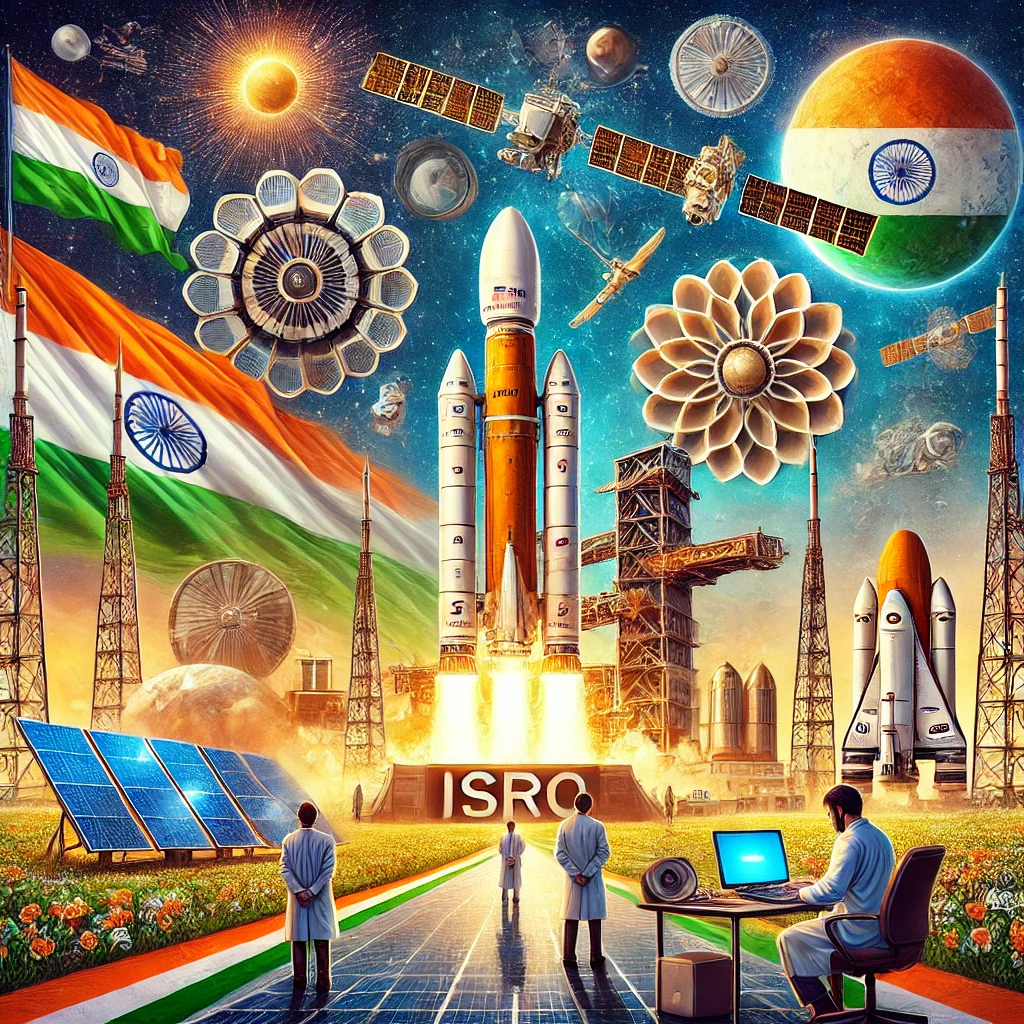History of The Indian Space Research Organization (ISRO) is ahead of India’s most important aerospace agency, scientific innovation, engineering skills and technological advances, and utilizes the enormous expansion of outer space and improvement of humanity for national progress. Under India’s government, an important hand from the Department of Space (DOS), Isro orchestrated the Indian space program through a network of special centers and devices. Originally Dr. established as the Indian National Committee for Space Research (Incosppar) in 1962 under Vikram Sarabhai‘s visionary leadership, Isro took its current form on August 15, 1969. It was successful to create, develop and use successfully with a comprehensive mandate. Room technology for versatile national purposes. In 1972, Isro was formally brought below Dos, which further strengthened its role in India’s space ambitions. In the core, Isro’s mission rotates to use room technology to address important national imperatives. It has groundbreaking large space-based systems that involve satellite communications, TV broadcasting, meteorological, remote measurement for resource management and navigation services. To pursue these initiatives, Isro has developed indigenous people launched vehicles – Polar Satellite Launch Vehicles (PSLV) and Geosinkronous Satellite Launch Vehicles (GSLV) – to distribute satellites in nominated classrooms with accuracy.

What is ISRO?
ISRO (Indian Space Research Organisation) is India’s space agency. It develops space technology for the country’s progress and benefits humanity.
When was ISRO founded?
ISRO was founded on August 15, 1969, replacing the Indian National Committee for Space Research (INCOSPAR), which was set up in 1962.
Who started ISRO?
Dr. Vikram Sarabhai is known as the founder of ISRO. He played a key role in shaping India’s space program.
What is the purpose of ISRO?
ISRO’s main goal is to develop space technology for India’s needs, such as communication, weather forecasting, remote sensing, and navigation.
What are ISRO’s major achievements?
ISRO has launched satellites, developed launch vehicles (PSLV & GSLV), sent missions to the Moon (Chandrayaan) and Mars (Mangalyaan), and improved space-based services.
What are ISRO’s key space missions?
Some important missions include:
Chandrayaan (Moon missions)
Mangalyaan (Mars mission)
Gaganyaan (Human spaceflight program)
Astrosat (Space observatory)
Where is ISRO’s headquarters?
ISRO’s headquarters is in Bengaluru, India.
What are the main ISRO centres?
ISRO has many centres, including:
Vikram Sarabhai Space Centre (VSSC) – builds launch vehicles (Thiruvananthapuram)
U R Rao Satellite Centre (URSC) – develops satellites (Bengaluru)
Satish Dhawan Space Centre (SDSC) – launches satellites and rockets (Sriharikota)
Liquid Propulsion Systems Centre (LPSC) – develops rocket engines (Bengaluru & Valiamala)
Space Applications Centre (SAC) – focuses on communication & remote sensing (Ahmedabad)
National Remote Sensing Centre (NRSC) – handles satellite data (Hyderabad)
Who leads ISRO?
The Chairman of ISRO also serves as the Secretary of the Department of Space (DOS) and Chairman of the Space Commission.